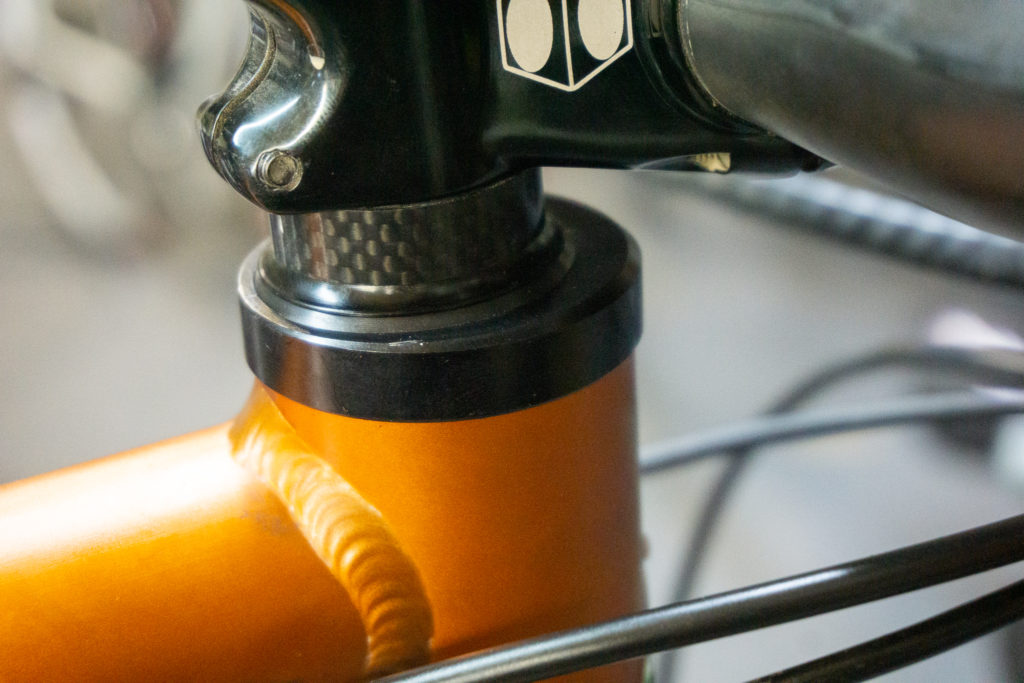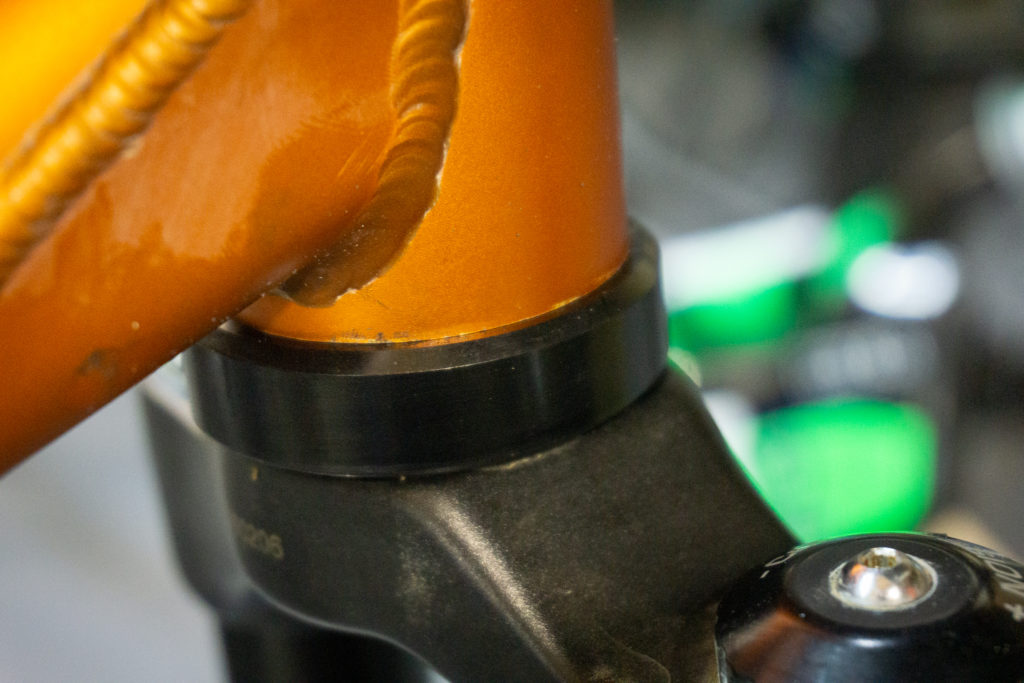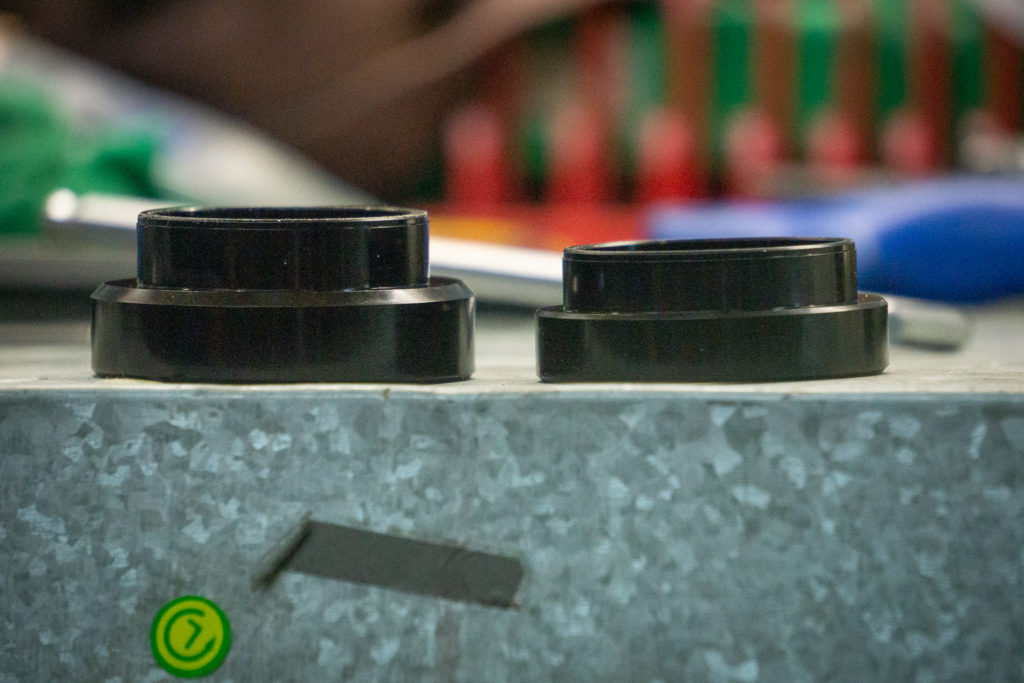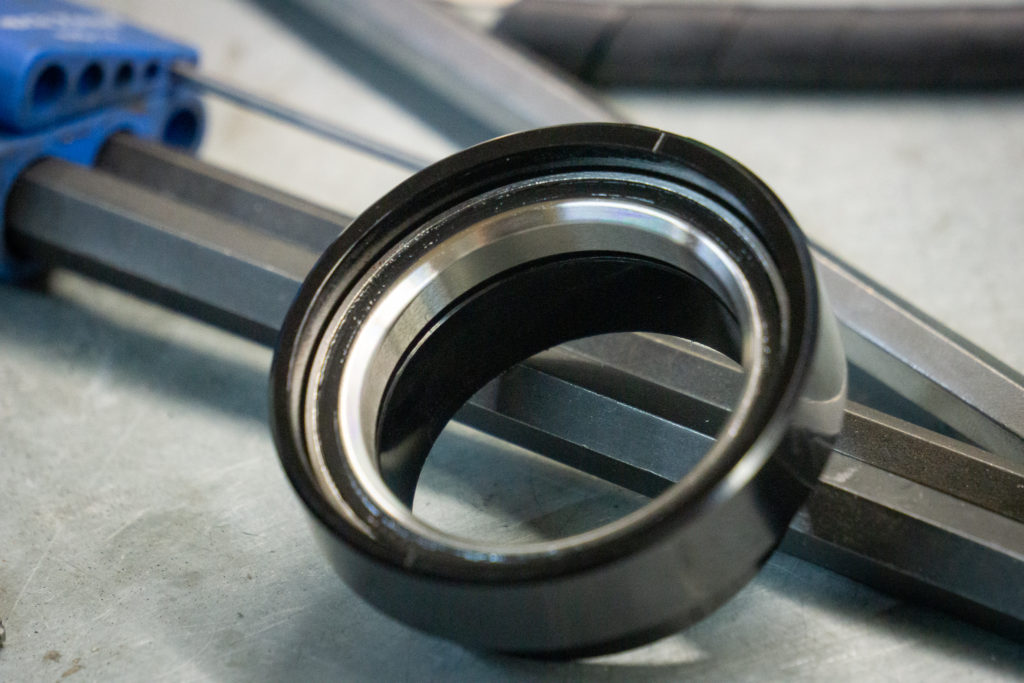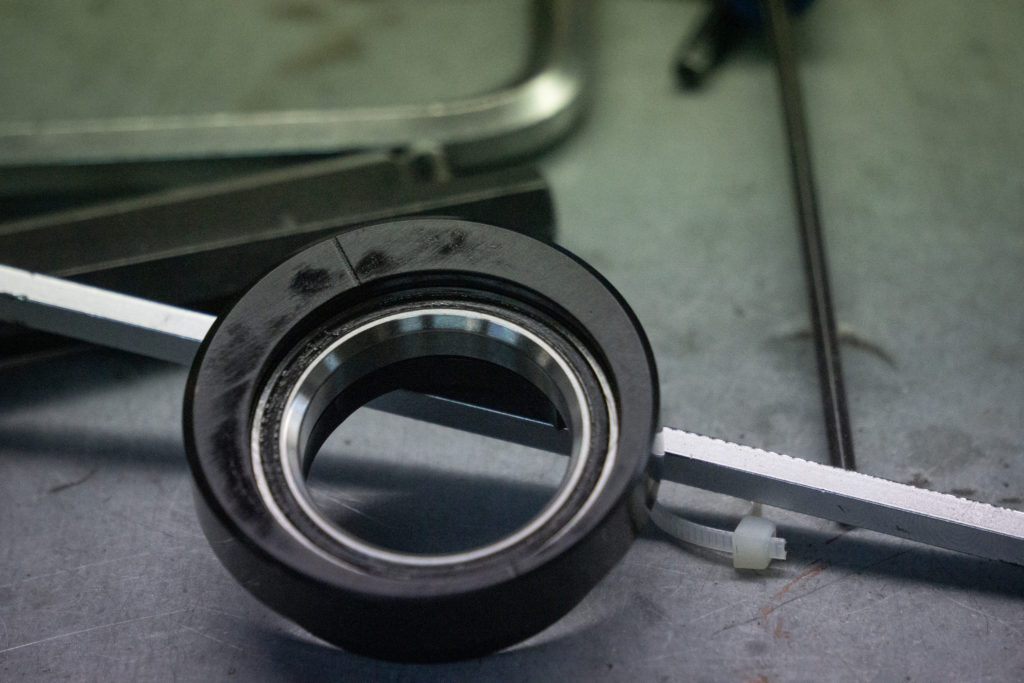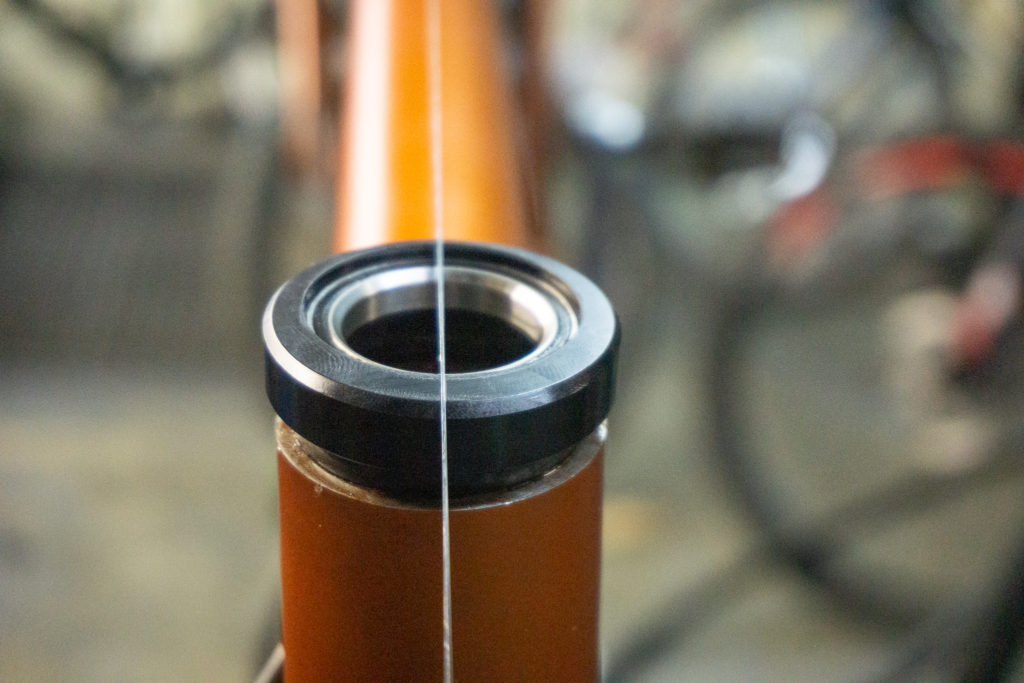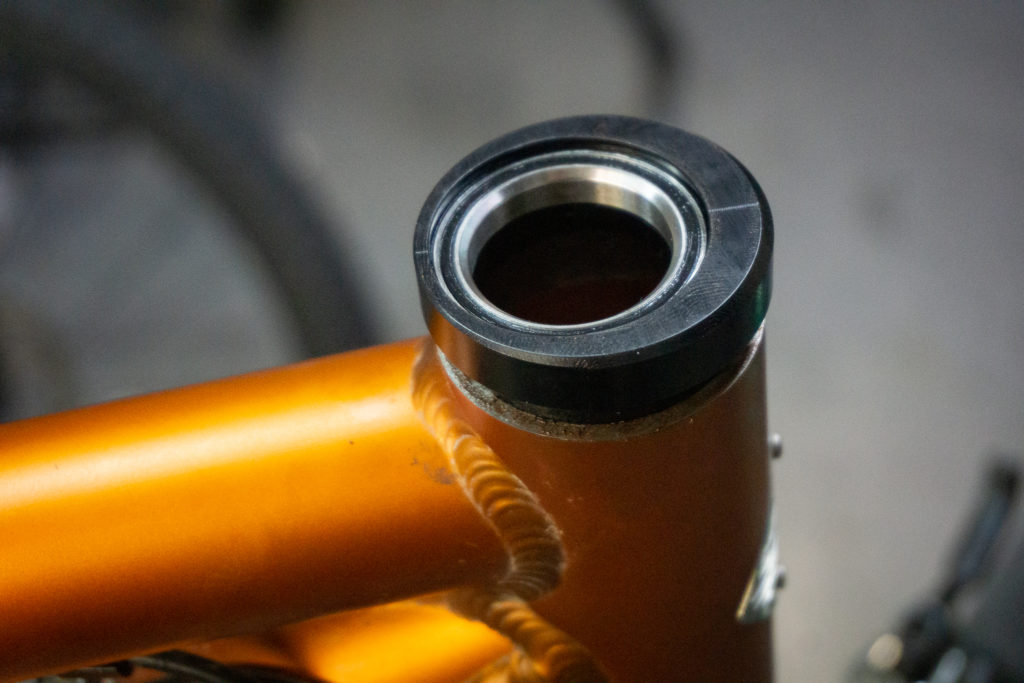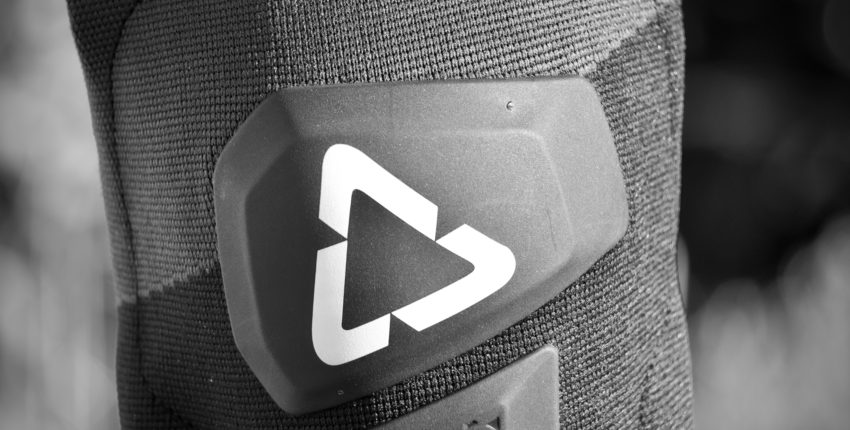Ridden: Works Components Angle Headset
How does one review a headset? Normally, pretty easily; how well does it spin, how long does it last? Without riding it for five years then saying “yeah, it’s durable but now it’s five years after it should have been reviewed”, it’s not really feasible to comment on durability if you’ve had a dozen rides on it in three months.
This review has been hampered by a couple of factors on the performance/durability front, first being a broken finger which meant no mountain biking for a couple of months, and then some other thing that meant even if you wanted to ride your mtb, that was a no-no. But the main reason this headset is on my bike isn’t because my previous one had worn out or didn’t spin smoothly, but because its purpose is to change the head angle of the bike. And it doesn’t take 5 years to quantify that, thankfully.
The Works Components angle headset came to my attention through a friend who rides the same bike as me, is a bit of a luddite in some respects like me, and rides way better than I can. She enthused as to the ride-changing properties the headset had brought to her bike, and after she smoked me all over the Redwoods late last year I was sure it was the head angle at fault so I promptly contacted Works to help with the cure. Within a couple of weeks a package from the UK turned up and it was time to get on the tools and see how this thing works (pardon the pun).
Now I’ve fitted hundreds of headsets in my life, so fitting the Works unit should have been a doddle. While it isn’t difficult, it does take a bit more time and precision than fitting a standard headset. The key is getting the centre of the front and back perfectly aligned with the frame and headtube, otherwise you’re going to get some weird steering and a sideways angle for your steerer! )Don’t laugh, I’ve seen similar with a stem shim that was fitted sideways and the guy was riding around wondering why his bars were lopsided.) So I assumed there would have to be a foolproof way to install the works cups, as the consequences of getting it wrong were fairly substantial.
The top and bottom cups are marked with notches to aid in the alignment, but aside from that you have to use your own expertise to make sure things are lined up. The method that Works recommends is tying a string or fishing line around the seat tube or post of the bike and using that as a straight-line to the headset. Fairly agricultural and a not perfect way, but after many dummy runs and being absolutely sure that every step was followed, i pressed in the cups, one at a time. I even tipped the bike upside down to double check that the backside of the bottom cup was perfectly straight, using another straight-line through the centre of the bottom bracket. It all seemed to be in order so the final pressings were made.
The headset itself is a solid unit indeed, the higher stack needed to get the angle in the cups makes it about twice the size of a more standard external unit, and taking some measurements of my stack height showed that I was getting the same numbers by removing the spacers under my stem. Headtube length is also taken into consideration when ordering, and as there are a huge number of models in 1º, 1.5º and 2º angles it’s imperative to get all the details right, and then confirm with the helpful people at Works that you are ordering what you need. The cups are anodized 6082 T6 alloy and are made in the UK, while the bearings are good quality sealed units that feel smooth and fit precisely with no play. I went for the 1.5º unit as my riding doesn’t require a super slack angle or gobs of travel.
As stated earlier, I didn’t get much time to ride the headset to test durability, but on the half-dozen rides I did do, the first of course was the one that mattered most. Could I feel a difference in the angle? Most definitely. Did that translate to better performance on the trail? Another strong affirmative there. My bike felt a lot more stable on the steeper terrain, due to the slight lengthening of the wheelbase, and cornering was a bit more fun… things you’d notice going from one bike to another with a slacker head angle. On the ride that would become my last for a while, I took on one of the gnarlier trails in town, and felt a lot more confident with the extra 1.5 out front. After nailing the tech, I simply tipped over at walking pace on a flat section and that was that. So I can’t blame the headset for my incompetence, unfortunately. But it really did transform the ride characteristics in the way I required and expected, and has given my bike a new lease of life and a stay of execution of the new bike front.
What I can say, is that if you have a bike you love, don’t want to/can’t afford to buy a new bike, or just want to get a bit slacker, the Works headset is a simple, well-made and well-thought-out component. No-one will notice it and fawn over it like a new crank or set of wheels, but the performance upgrade is the main reason for its existence, and that’s what the best upgrades are meant to do, right?

